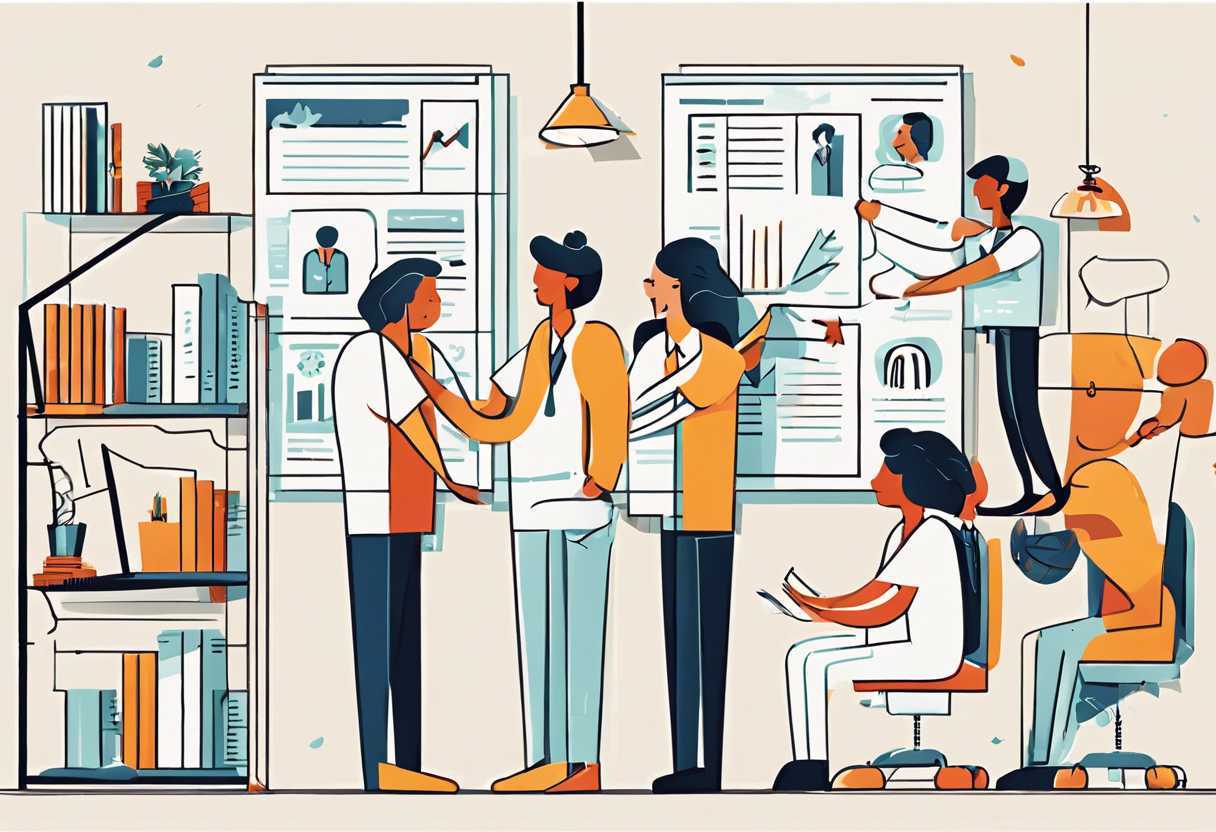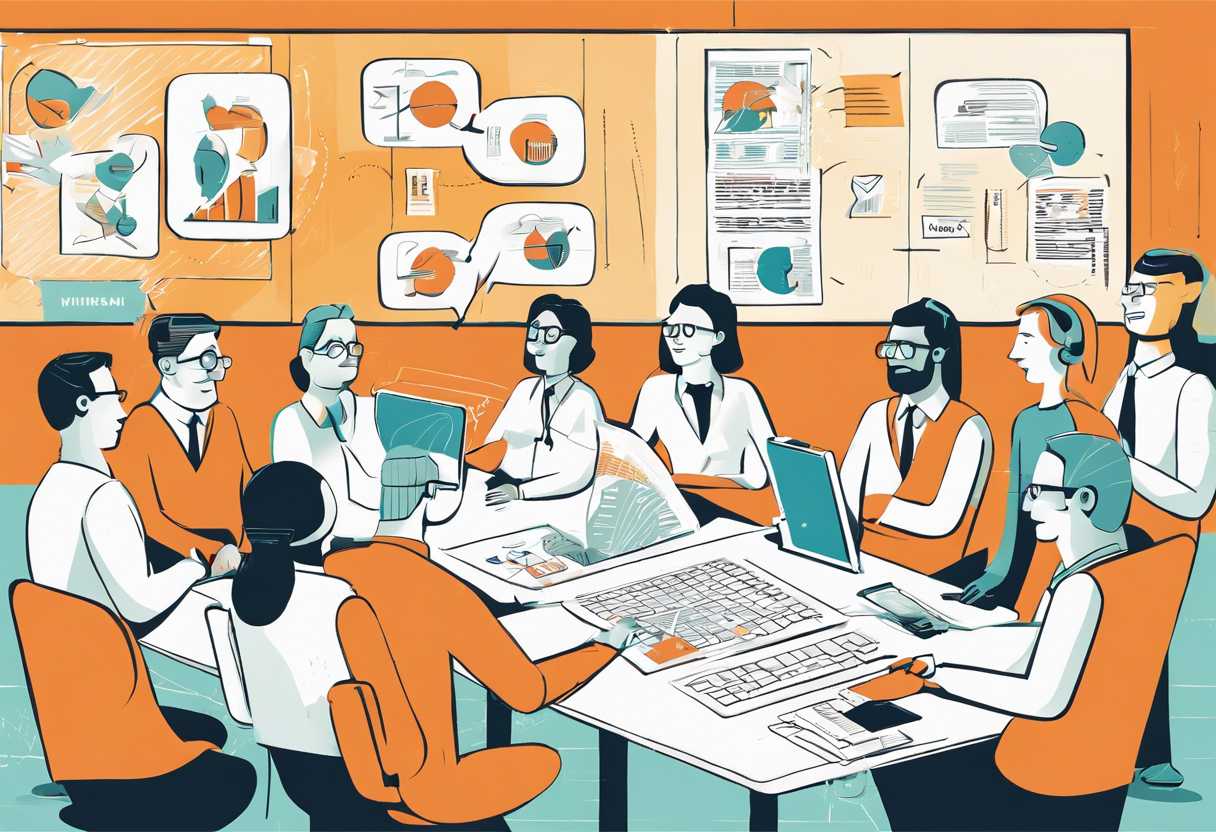Are you looking to enhance the communication skills within your team? Effective team communication is essential for productivity, collaboration, and overall success. In this blog post, we will explore 7 easy steps to develop good team communication skills. From mastering the art of active listening to building trust and rapport, overcoming communication barriers, utilizing nonverbal communication, and implementing feedback strategies, we will cover all the essential aspects of effective team communication. By the end of this post, you will have a clear understanding of how to improve communication within your team and foster a more cohesive and productive work environment. So, let’s dive in and explore the key strategies for developing good team communication skills in 7 easy steps.
Mastering the Art of Active Listening for Effective Team Communication
The Importance of Active Listening in Team Communication
Active listening is a crucial skill for effective team communication. It involves fully concentrating, understanding, responding, and remembering what is being said. By actively listening, team members can build trust, foster collaboration, and avoid misunderstandings. Research shows that active listening can improve team performance and productivity.
Key Strategies for Mastering Active Listening
1. Give your full attention: When a team member is speaking, give them your undivided attention. Avoid distractions and maintain eye contact to show that you are fully engaged.
2. Practice empathy: Try to understand the speaker’s perspective and emotions. Show empathy by acknowledging their feelings and validating their experiences.
3. Ask clarifying questions: To ensure understanding, ask open-ended questions to clarify any points that are unclear. This demonstrates that you are actively listening and seeking to comprehend the speaker’s message.
The Impact of Active Listening on Team Dynamics
Active listening can significantly impact team dynamics by fostering a culture of open communication and mutual respect. When team members feel heard and understood, they are more likely to contribute their ideas and opinions. This leads to better decision-making, increased creativity, and a stronger sense of unity within the team.

Building Trust and Rapport for Stronger Team Communication
The Importance of Trust in Team Communication
Trust is the foundation of effective team communication. When team members trust each other, they are more likely to openly share their thoughts and ideas, leading to better collaboration and problem-solving. Without trust, communication can break down, leading to misunderstandings and conflicts.
Ways to Build Trust and Rapport in a Team
Building trust and rapport in a team takes time and effort, but the payoff is worth it. One way to build trust is through active listening. When team members feel heard and understood, they are more likely to trust each other. Another important factor is transparency. Being open and honest with each other fosters trust and creates a more positive team environment.
- Active listening
- Transparency
- Setting clear expectations
- Showing vulnerability
Measuring Trust and Rapport in a Team
Measuring trust and rapport in a team can be challenging, but it’s important to track progress and identify areas for improvement. One way to measure trust is through team surveys that ask team members about their level of trust in each other and in the team as a whole. Another method is to observe team interactions and look for signs of trust and rapport, such as open communication and collaboration.
| Method | Advantages | Disadvantages |
| Team surveys | Provides quantitative data | May not capture the full picture |
| Observing team interactions | Allows for qualitative assessment | Subject to observer bias |

Overcoming Barriers to Communication within Your Team
Identifying Communication Barriers
One of the first steps in overcoming communication barriers within your team is to identify what those barriers are. These barriers can include differences in communication styles, lack of clarity in messaging, or even physical barriers such as working in different locations. By understanding the specific barriers your team faces, you can begin to address them more effectively.
Improving Active Listening
Active listening is a crucial skill for effective communication within a team. Encouraging team members to actively listen to one another can help to reduce misunderstandings and improve overall communication. This can be achieved through training and workshops focused on active listening techniques, as well as creating a culture of respect and open-mindedness within the team.
Utilizing Technology for Communication
Technology can be a powerful tool for overcoming communication barriers within a team. Utilizing communication platforms, such as Slack or Microsoft Teams, can help to bridge the gap between team members who are working remotely or in different locations. Additionally, video conferencing tools can facilitate more personal and effective communication, especially when face-to-face interactions are not possible.
Utilizing Nonverbal Communication to Enhance Team Dynamics
The Power of Body Language
Nonverbal communication, such as body language, plays a crucial role in team dynamics. It can convey emotions, attitudes, and intentions, often more effectively than words. By being aware of and utilizing body language, team members can better understand each other and work together more cohesively. For example, maintaining open and relaxed body posture can signal approachability and openness, while crossed arms may indicate defensiveness or resistance.
Facial Expressions and Gestures
Facial expressions and gestures are also important aspects of nonverbal communication. A smile can convey warmth and friendliness, while a furrowed brow may signal concern or confusion. Similarly, hand gestures can emphasize points, show agreement, or indicate disagreement. Being mindful of these nonverbal cues can help team members better interpret each other’s feelings and intentions, leading to improved collaboration and understanding.
Creating a Nonverbal Communication Guide
To enhance team dynamics through nonverbal communication, consider creating a guide that outlines common nonverbal cues and their interpretations. This guide can serve as a reference for team members to better understand each other’s nonverbal signals and promote clearer communication. Additionally, conducting training sessions on nonverbal communication can help team members become more aware of their own nonverbal cues and improve their ability to interpret others’ signals.
Implementing Feedback Strategies for Continuous Improvement in Team Communication
The Importance of Feedback in Team Communication
Feedback is an essential component of effective team communication. It provides team members with valuable insights into their performance, helps identify areas for improvement, and fosters a culture of continuous learning and growth. By implementing feedback strategies, teams can enhance their communication processes and work together more efficiently.
Creating a Feedback-Friendly Environment
To implement feedback strategies successfully, it’s crucial to create a supportive and open environment where team members feel comfortable giving and receiving feedback. Encouraging open communication, active listening, and mutual respect can help foster a culture of constructive feedback. Additionally, providing training on giving and receiving feedback can equip team members with the necessary skills to engage in productive conversations.
Utilizing Feedback Tools and Technologies
Advancements in technology have made it easier for teams to collect and analyze feedback. Utilizing feedback tools and technologies, such as survey platforms, communication apps, and performance management systems, can streamline the feedback process and provide valuable data for continuous improvement. These tools can help track progress, identify trends, and measure the impact of feedback on team communication.
Conclusion
Developing good team communication skills is essential for the success of any organization. By mastering the art of active listening, building trust and rapport, overcoming communication barriers, utilizing nonverbal communication, and implementing feedback strategies, you can create a strong and cohesive team that communicates effectively.
Remember, effective communication is a continuous process that requires effort and commitment from every team member. By following these 7 easy steps, you can improve team communication and create a positive and productive work environment.
So, take the time to practice these skills and encourage your team to do the same. By doing so, you can foster a culture of open communication, collaboration, and mutual respect within your team.
Start implementing these steps today and watch as your team communication skills improve, leading to greater success and achievement in your professional endeavors.

